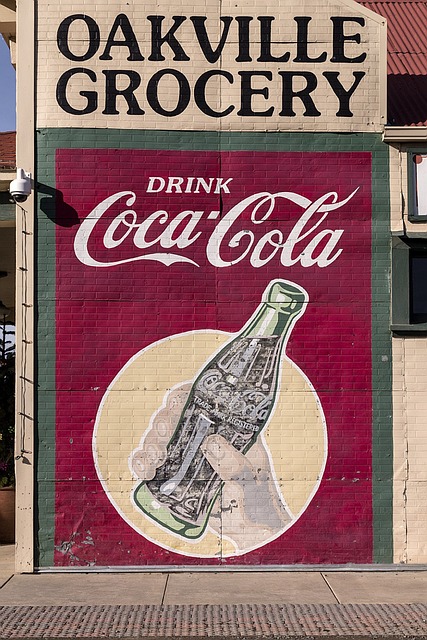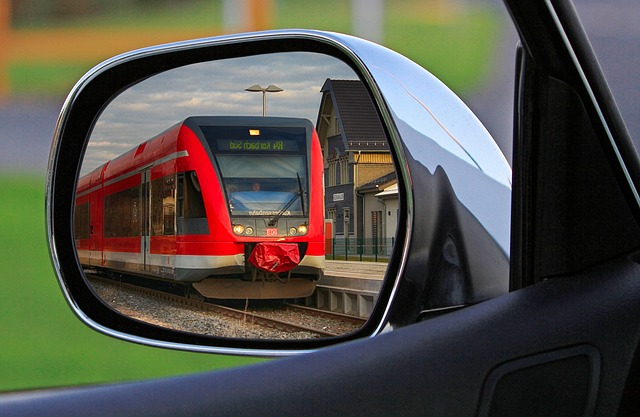Oakville's unpredictable climate demands robust exterior siding solutions. Studio Aluminum, a l…….
Category: Siding Oakville
Studio Aluminum – Siding Oakville keyword
Siding Oakville: A Comprehensive Exploration
Introduction
Welcome to an extensive exploration of the dynamic concept known as Siding Oakville. This article aims to dissect, analyze, and illuminate every facet of this intriguing phenomenon, offering valuable insights for stakeholders, enthusiasts, and curious minds alike. Siding Oakville is more than just a term; it represents a complex interplay of technology, economics, policy, and global trends, shaping urban landscapes and communities worldwide. As we delve into its depths, readers will gain a profound understanding of its significance, evolution, and the vast potential it holds for the future of smart cities and sustainable development.
Understanding Siding Oakville: Unraveling the Concept
Definition and Core Components
Siding Oakville, in its essence, refers to a comprehensive urban planning and development framework that integrates advanced technologies, data-driven insights, and community engagement to optimize various aspects of city life. It is a holistic approach that aims to create intelligent, connected, and livable urban environments. The core components of Siding Oakville include:
-
Smart Infrastructure: This involves the deployment of Internet of Things (IoT) devices, sensors, and connectivity infrastructure to collect and exchange data. Examples include smart traffic lights, waste management systems, and energy-efficient street lighting.
-
Data Analytics: The heart of Siding Oakville lies in its ability to process and analyze vast amounts of data from various sources. Advanced analytics enable cities to gain insights into traffic patterns, energy consumption, waste generation, and citizen feedback, facilitating informed decision-making.
-
Community Engagement: Active participation and collaboration with residents are pivotal. This involves digital platforms and apps that encourage citizens to provide feedback, report issues, and engage in local governance, fostering a sense of ownership and community.
-
Sustainable Development: Siding Oakville emphasizes environmentally conscious practices. It promotes the use of renewable energy sources, efficient waste management systems, green spaces, and sustainable transportation options to create eco-friendly urban environments.
Historical Context and Evolution
The concept of Siding Oakville has its roots in the growing recognition of the need for smart and sustainable cities. The term itself draws inspiration from the vibrant and dynamic city of Oakville, Ontario, Canada, known for its innovative approach to urban planning. Over time, the idea has evolved from a localized initiative to a global phenomenon, gaining traction and adaptability across diverse regions.
In the early 2010s, Oakville became a pioneer in implementing connected transportation solutions, real-time traffic monitoring systems, and citizen engagement platforms. These early efforts laid the foundation for what would later be recognized as Siding Oakville. As technology advanced and data-driven decision-making gained prominence, this concept spread globally, adapted to local contexts, and evolved into a comprehensive urban development strategy.
Global Impact and Trends
Siding Oakville has left an indelible mark on urban landscapes worldwide, with cities across different continents embracing its principles. Its global impact is evident in several key trends:
-
Urban Smartization: Many metropolises are adopting Siding Oakville strategies to address the challenges of rapid urbanization. This includes optimizing transportation networks, enhancing public safety through smart surveillance systems, and improving city services through digital transformation.
-
Data-Driven Governance: The use of data analytics is becoming ubiquitous in urban planning. Cities are leveraging data to identify patterns, predict trends, and make more efficient decisions regarding infrastructure development, resource allocation, and citizen services.
-
Sustainable Urbanization: There is a growing emphasis on creating green and resilient cities. Siding Oakville principles promote sustainable practices, encouraging the adoption of renewable energy, efficient waste management, and environmentally friendly urban design.
-
Citizen Engagement Platforms: Digital platforms that foster two-way communication between citizens and local governments are becoming commonplace. These tools enable residents to participate in decision-making processes, report issues, and access city services conveniently.
Economic Considerations: Market Dynamics and Opportunities
The implementation of Siding Oakville strategies has significant economic implications, influencing various sectors and market dynamics:
| Sector Impact | Description |
|---|---|
| Technology Industry | The growth of Siding Oakville fosters the development of specialized technology companies, creating job opportunities and driving innovation in urban computing, data analytics, and IoT solutions. |
| Infrastructure Development | Smart city initiatives often lead to substantial investments in infrastructure upgrades, stimulating construction and engineering sectors while enhancing city connectivity. |
| Public Services Efficiency | By optimizing processes and leveraging data, cities can reduce operational costs and improve service delivery, potentially saving taxpayer dollars and enhancing citizen satisfaction. |
| Real Estate Market | Siding Oakville cities often attract investors and residents seeking modern amenities and improved living standards, boosting property values and the overall real estate market. |
| Tourism Boost | Intelligent urban environments with efficient transportation, clean energy, and digital accessibility can become major attractions, enhancing local tourism and contributing to economic growth. |
Technological Advancements: Shaping the Future of Siding Oakville
Technology plays a pivotal role in shaping the capabilities and future prospects of Siding Oakville. Several advancements have contributed to its evolution:
-
5G and Beyond: High-speed, low-latency 5G networks enable faster data transfer, supporting real-time analytics and enhanced connectivity for IoT devices. Future iterations like 6G will further revolutionize urban communication.
-
Edge Computing: This technology brings computation closer to the data source, reducing latency and enabling efficient processing of large volumes of data generated within cities.
-
Artificial Intelligence (AI): AI algorithms power advanced analytics, predictive modeling, and automated decision-making processes, enhancing efficiency in areas like traffic management, waste sorting, and citizen service delivery.
-
Blockchain for Security: Blockchain technology can ensure secure and transparent data sharing, protecting citizen privacy and ensuring the integrity of city infrastructure systems.
Policy Implications: Enabling Siding Oakville Implementation
The successful deployment of Siding Oakville requires thoughtful policy considerations and regulatory frameworks:
-
Data Governance: Clear policies regarding data collection, storage, and usage are essential to protect citizen privacy and ensure responsible data handling.
-
Cybersecurity: As cities become more digitized, robust cybersecurity measures must be in place to safeguard critical infrastructure and sensitive data.
-
Public-Private Partnerships: Collaborative partnerships can leverage private sector expertise and resources for efficient project implementation and maintenance.
-
Digital Literacy and Inclusion: Efforts should be made to bridge the digital divide by providing accessible digital services and promoting digital literacy among all demographics.
Case Studies: Successful Siding Oakville Implementations
Singapore: Smart Nation Initiative
Singapore is a prominent example of a city-state that has embraced Siding Oakville principles with remarkable success. Its “Smart Nation” initiative leverages technology to enhance various aspects of life, from efficient public transportation and smart homes to digital governance and healthcare solutions. The country’s data-driven approach enables it to make informed decisions, resulting in improved urban services and a higher quality of life for residents.
Copenhagen, Denmark: Cycling-Centric Urban Planning
Copenhagen has gained international acclaim for its sustainable and livable urban environment. The city prioritizes cycling infrastructure, promoting a car-free lifestyle. Siding Oakville principles have been applied to optimize traffic flow, provide real-time transportation data, and engage citizens in local transportation planning, making Copenhagen a model for smart and eco-friendly cities.
Sydney, Australia: Data-Driven Emergency Response
Sydney has implemented advanced analytics to enhance emergency response systems. By analyzing historical data and real-time sensor feeds, the city can predict and respond more effectively to natural disasters like bushfires and floods. This data-driven approach saves lives and minimizes damage, showcasing the power of Siding Oakville in crisis management.
Challenges and Considerations for Future Development
While Siding Oakville offers immense potential, there are challenges that must be addressed:
-
Data Privacy Concerns: Balancing the benefits of data collection with citizen privacy protection is crucial to maintaining public trust.
-
Digital Divide and Accessibility: Ensuring equal access to digital services and addressing the needs of underserved communities should be a priority.
-
Cybersecurity Threats: As cities become more connected, the risk of cyberattacks increases, requiring robust security measures.
-
Scalability and Adaptability: Siding Oakville solutions must be adaptable to diverse urban contexts, considering cultural, social, and economic differences across regions.
Conclusion: Shaping the Future of Urban Living
Siding Oakville represents a transformative vision for urban development, combining technology, data, and community engagement to create intelligent, sustainable, and livable cities. As global urbanization continues to rise, the principles and strategies associated with Siding Oakville will be indispensable in shaping the future of urban life. With careful planning, thoughtful policy, and innovative technologies, cities worldwide can embrace this framework to enhance citizen well-being, promote environmental stewardship, and drive economic growth.
The journey towards becoming a smart city is complex and multifaceted, but with ongoing research, collaboration, and adaptive strategies, Siding Oakville has the potential to serve as a global blueprint for creating thriving urban environments that meet the needs of current and future generations.
Siding Costs in Oakville: Comparing Studio Aluminum vs Traditional Materials
Choosing the right siding for your Oakville property involves understanding material costs, with Stu…….
Top 10 Siding Materials for Oakville Homes: Expert Contractor Insights
Selecting siding for your Oakville home requires balancing aesthetics and practicality. A Siding Oak…….
Top 5 Siding Types for Oakville Homes: Expert Guide to Enhance Your Property
When choosing siding for your Oakville home, consult a Siding Oakville Expert to explore tailored op…….
Affordable siding in Oakville: Top 10 budget-friendly options & expert tips
Homeowners in Oakville can enhance their properties without breaking the bank by consulting a Siding…….
Insulated Siding for Oakville Homes: Expert Tips on Efficiency and Comfort
Homeowners in Oakville are turning to insulated siding for its numerous benefits, including energy e…….
Uncovering Top Oakville Siding Experts for Stunning Home Exteriors
When choosing an Oakville siding contractor, conduct thorough research focusing on experienced profe…….
Board and Batten Siding: A Timeless Upgrade for Oakville Homes
Board and batten siding, a timeless classic in Oakville, seamlessly blends traditional charm with mo…….
Studio Aluminum Siding Installation: Oakville Homeowner’s Guide
Studio Aluminum siding is a modern, durable option for new constructions or renovations in Oakville,…….
Top 7 Siding Suppliers in Oakville: Studio Aluminum Leads the Way to Quality Materials
In Oakville, Studio Aluminum stands out as a top siding supplier, offering high-quality aluminum sid…….










